Growers have relied on artificial light sources for indoor farming for decades. Whether you are using soil, aquaponic or a hydroponic system, these light sources all have different levels of effectiveness. Fluorescent, Pressure Sodium, HID, and LEDs are all made to mimic the sun’s rays indoors. In this article we focus on LED Grow Lights and how to choose the best LED grow light
- Why LED grow lights versus HPS or HID?
- HID Lamps
- HPS Lamps
- 1. Platinum Advanced LED series P900
- 2. Black Dog LED PhytoMAX-2 Series
- 3. G8LED Full Spectrum 600 Series
- 4. Roleadro Chip On Board (COB) LED Grow Lights
- 5. California Lightworks 440W
- 6. Viparspectra Reflector Series
- 7. Apollo Horticulture 300W
- 8. MarsHydro Reflector 480W
- 9. GalaxyHydro LED Grow Lights
- 10. King Plus Double Chip LED Grow Lights
- Try ‘Em Before You Buy ‘Em
If you’re an experienced cannabis grower, you know the market for LED grow lights is very different than it was a decade — or even just a few years — ago.
If, on the other hand, you’re just getting into cannabis growing, congratulations: You’re entering the art of growing at one of the best (and most affordable) times to start a grow op. The technology has come a long way and there’s an embarrassment of riches to choose from.
Here, we’re going to talk about some of the best LED grow lights on the market and how they can help you run a lean and efficient grow operation.
Why LED grow lights versus HPS or HID?
LED lights aren’t the only game in town, so the first question that often gets asked is “what makes LED grow lights superior to their alternatives?” After all, HPS and HID lamps have been around for a lot longer than LEDs, and LEDs weren’t great out of the gate.
So, let’s talk about that.
HID Lamps
High-intensity discharge (HID) lights are ones you’re probably familiar with in a grow light setup.
Instead of using a filament, these lamps use a charged-gas tube, just like fluorescent, within a bulb enclosure. And like fluorescents, they’re slow to turn on — it takes about 10 minutes to get them warmed up — and generally more inefficient than other bulb types.
The technology has been around a long time, which is a plus. Therefore, HID lamps – whether mercury vapor or metal halide lamps – can present a smaller up-front cost. But these gains are soon erased by the overall electrical efficiency of these bulbs compared to LED grow lights.
The other consideration is that HID lights require more ventilation for the lights compared to LED lights, which makes it harder to have a discreet grow room.
HPS Lamps
The other common lamp to precede LED grow lights are high-pressure sodium (HPS) lamps.
These might have the widest adoption of all grow lamps. HPS lamps are sort of the “old man Winter” of the grow scene. That’s because they work, they’re not too expensive, and growers have been sharing how to get the best yields with these lights for a long time.
But LED lamps have surpassed HPS at this point, for a few reasons.
A study published in the Public Library of Science showed that given high-efficiency models of both LED and HPS, both performed about equally in terms of energy usage. On a longer-term basis, however, LED outstripped HPS by a factor of five-to-ten.
The choice, then, is clear: LED grow lights beat HPS, even though both are attractive options.
1. Platinum Advanced LED series P900
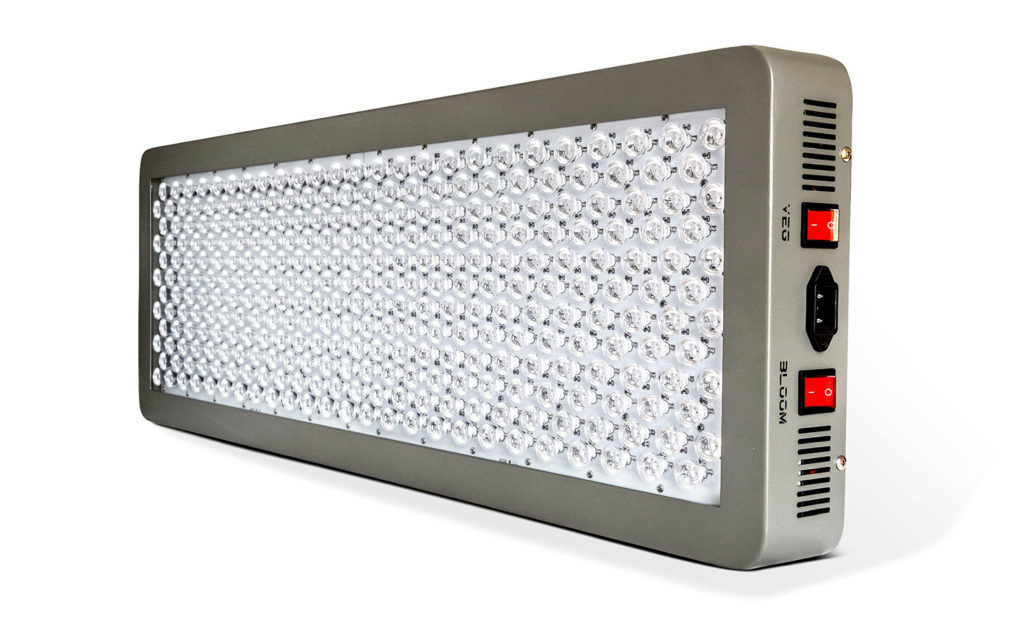
The crazy thing about current LED grow lights is the extreme discrepancy between possible wattage and necessity of a cooling system.
As veteran growers know, larger lights and larger wattage usually requires additional wattage for cooling. LEDs aren’t defying the laws of thermodynamics or anything, but their heat efficiency ratios are off the chart compared to older grow lights.
Enter Advanced Platinum’s P900 series 11-band LED grow lights. Despite the massive wattage, it requires no external cooling, has top-notch aluminium heat sinks, and has two focusing lenses angled at 60 and 90 degrees.
In addition, that 11-band light offers 100% usable light, meaning nothing’s wasted.
2. Black Dog LED PhytoMAX-2 Series
Ready to grow some cannabis plants with enormous buds? The Black Dog series might just have what you need.
The PhytoMAX line clocks with lights around the equivalent of a 1,000-watt HID system, despite consuming only 600 actual watts.
Another benefit of the PhytoMAX is its 1.5 x 1.5 m (5′ x 5′) plant coverage during flowering, and 2 x 2 m (6.5′ x 6.5′) during vegetation. That far outstrips the 1.2 x 1.2 m (4′ x 4′) range of most 1000 watts LED lamp arrays. It’s a large light.
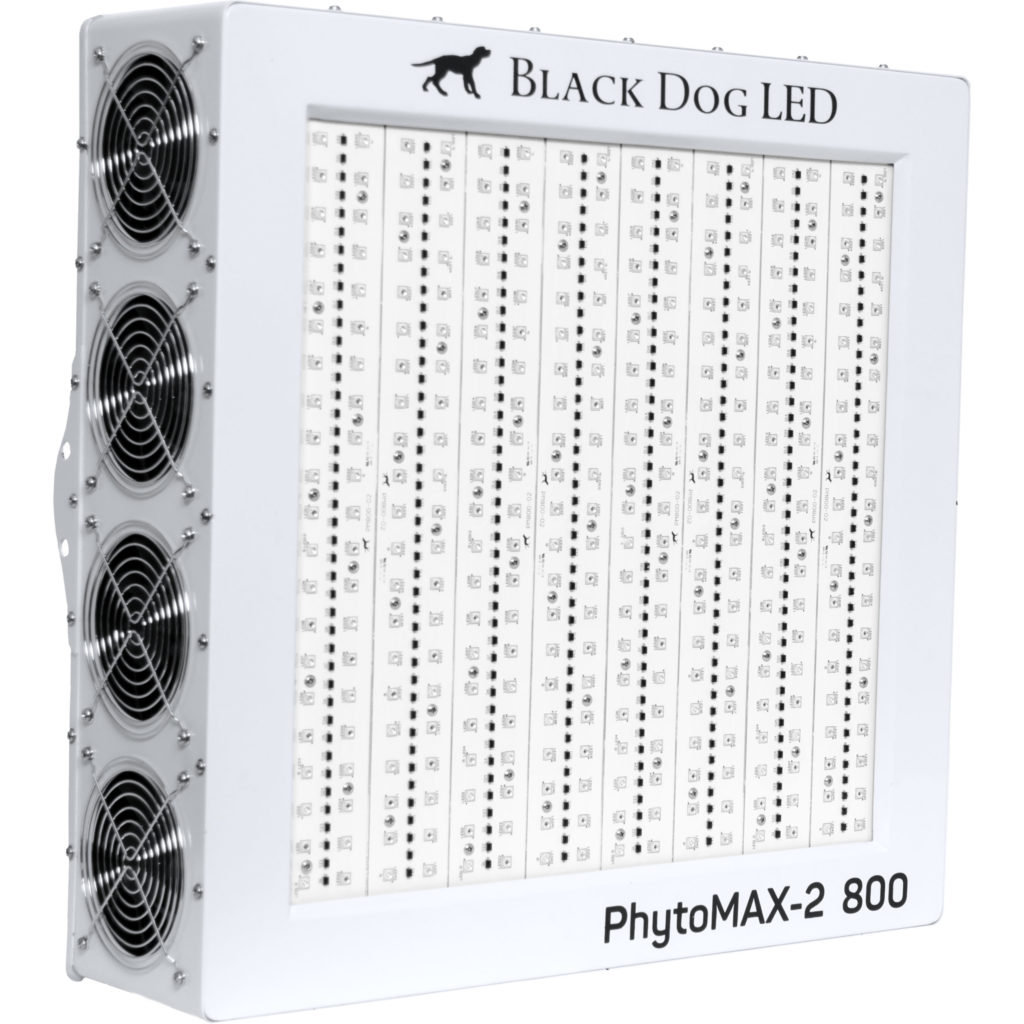
The Black Dog LEDs also come with a 100% manufacturer’s warrant for breakage. That’s a good thing since at €1,450 ($1,700) this is one of the priciest lights on this list.
But if you’re a commercial grower or serious enthusiast, you’ll find it’s worth every penny.
3. G8LED Full Spectrum 600 Series
Growers really like these lights from this lesser known, but wholly reliably brand. Like the Black Dog, the G8LED 600 series offers an equivalent 1000-watt HID light.
The G8LED’s major selling points are its relatively light weight and 8-color spectrum band diversity for its price.
Because these are LEDs, they also throw much less heat than HID or HPS lights. That might be a small thing, but ultimately that means needing less water for your plants to thrive.
If you need a little more light for your operation, the 900-watt version of the G8LED offers the same benefits as the 600 series along with a light spread equal to a 1400-watt HID light display.
4. Roleadro Chip On Board (COB) LED Grow Lights
Roleandro’s line of integrated Chip On Board (COB) lamps are some of the best “bang for your buck” LED grow lights you can buy.
At 24 x 36 x 14 cm (9.4 x 14.2 x 5.5 inches), the 400W model is a compact beauty. The 800W model is similarly compact with a two by two array and fans to match the number of lights. These can also be easily daisy-chained and the four light arrays can be adjusted to throw either two or four light at a time.
The Roleadro grow lights are manufactured in China instead of the U.S., which is sometimes a sign of manufacture quality but that does not seem to be the case in this instance.
Great quality control means these Roleadro lamps are a good bargain for less than half the price of some of their competitive counterparts.
5. California Lightworks 440W
One of the biggest benefits of going the route of using LED grow lights is their longevity. Even after 50000 hours, these lights will retain 90% of their overall light output efficiency.
At 440 watts, this California Lightworks model doesn’t pack some of the punch of our earlier entries. However, it still delivers five bands of colour spectrums as well as a spectrum switch to provide the best light in both grow and vegetation stages.
One pro is that unlike higher wattage California Lightworks models, which tend to run hot, the 440W model runs cool while still delivering great light.
At 51 x 18 x 56 cm (20 x 7 x 22 in.), the unit is also relatively compact and earns strong marks for reliability.
The only major drawbacks are loud fans without filters and a lack of ability to string units together.
6. Viparspectra Reflector Series
Viparaspectra’s Reflector series grow lights are almost the perfect bulbs for a new to a mid-level grower.
Are there better lamps on the market? Undoubtedly. But the Viparaspectra Reflector Series seem to find the sweet spot of low price and good quality LED grow lights.
Even better, the company offers a three-year warranty and 30-day satisfaction guarantee, meaning you can afford to take a risk on a “cheaper” light to make sure it fits in with your grow op before you commit to the brand.
If you want to grow weed on a budget, this is a fine light to start with.
As with other LED lights, the Viparaspectra produce close to twice the equivalent light per wattage as HPS lights. So, the 450-watt mode will only consume a little over 200 watts of actual wattage.
Despite that, these Viparaspectra models do have a reputation for running a little hotter than other LED arrays. But compared to HPS or HID lights, they’re practically arctic cool. It all depends on what you’re used to.
7. Apollo Horticulture 300W
Apollo Horticulture has some great LED lamps in the sub-€425 ($500) range.
At just over a hundred dollars, the 300W is something of the budget model, but shouldn’t be underestimated. With around 2.5 m (8 – 9 feet) of total coverage, it punches well above its weight in terms of plant coverage.
Even in its vegetation stage settings, the Apollo offers around 2 m (6 to 7 feet) of coverage.
Unlike many others on this list, the Apollo is a circular light array, which means it throws its light a little differently than the square or rectangular arrays. As such, the intensity of light does drop off around the perimeter in a different way than other lights do.
That’s not a big drawback, but something to be aware of in the purchasing process.
In addition to a two-year limited warranty, Apollo has a reputation for strong customer service which can be a make or break proposition in giving a lower priced model of LED grow lights to test out.
8. MarsHydro Reflector 480W
The MarsHydro Reflector grow lights are ideal for the compact growing environment.
What makes the “Reflector” series special-helping it earn a place on this list-is that the light covers both vegetation and flowering stages of the grow cycle. (Many growers have separate lamps for the two stages).
These models’ lights cover from 75 x 105 cm (2.5′ x 3.5′) during the vegetation stage and 60 x 90 cm (2′ x 3′) during flower stage. Their compact nature makes them ideal for small sheds, rooms, and other small grow areas.
The company boasts LED lights and framework that require no external cooling and run 60 percent cooler than comparable HID lights (the unit runs at a scant 467 BTUs). Customer satisfaction is very high for this model and much of the MarsHydro line.
The design is superb and despite a small premium over similar LEDs in this price range, the design lifts it over the competition. It’s still one of the finer lights you can get for under €170 ($200).
In fact, if 480W is too much for your needs, the company has a 240W model that’s just over €85 ($100) that’s also worth checking out.
9. GalaxyHydro LED Grow Lights
First, let’s get the GalaxyHydro line’s biggest drawback out of the way: Their coverage is not as large as some comparable LED grow lights.
How small coverage? Try 30 x 20 cm (12.1 x 8.2 in).
Beyond that, however, it’s hard to find a nicer light for under €85 ($100). Offering 9 full bands of colour spectrum, the GalaxyHydro 300W is perfect for even the smallest of grow setups.
Somehow, GalaxyHydro has managed to be even more efficient than many other LED manufacturers, managing to eke out 300-watt equivalents of light while consuming just 135 watts of energy.
Expect a lot durability out of these GalaxyHydro models as well as 50.000 hours of lamp life.
10. King Plus Double Chip LED Grow Lights
Growers love these King Plus Double Chip LED grow lights because they’re simple, reliable, and cheap.
They may lack the tiltable angles and cover only 60 to 90 cm (two to three feet) of plants, but at less than €100 ($120) for an 800-watt equivalent system, they’re hard to pass up.
The big selling point for the King Plus is their “double chip” technology. Claiming their 10W LEDs have better efficiency than their more standard 3W and 5W equivalents, the company seeks to strike the perfect balance between light efficacy, price, and technology.
It’s a little bit of a marketing gimmick in the sense that it’s “double chip” is just a fancy term for two 5W chips combining for 10W of LED-but at this price point, you can give them the win.
Try ‘Em Before You Buy ‘Em
Hopefully, this guide has helped discerning growers pick from a selection of LED grow lights and systems. No list can be truly definitive, but this lamp guide should provide a decent starting point for the serious cannabis grower.
Heck, you don’t even have to choose just one light model. Thanks to the lengthy warranties on many of these models, there’s no need to be over-cautious. Simply try a few models and ranges and return ones that aren’t working for your grow operation for a refund.
No one can see the future, but after a few months of using LEDs, you just might find yourself putting your HPS and HID lights on eBay.





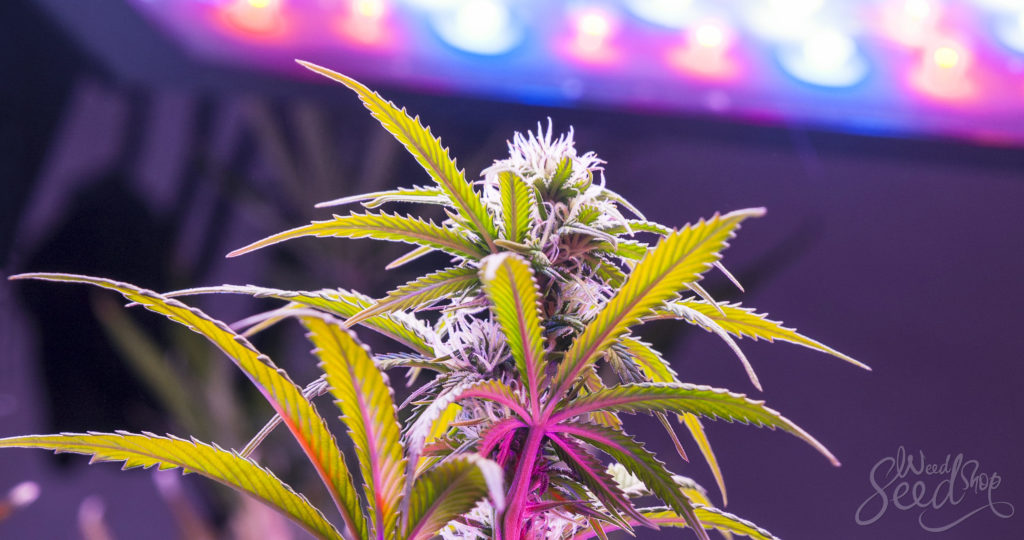
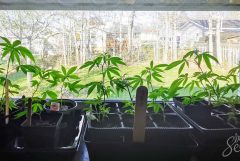
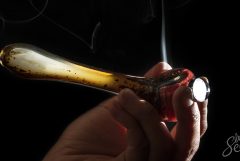
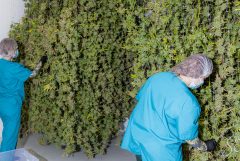
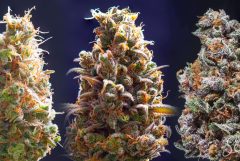


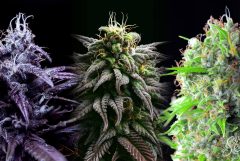

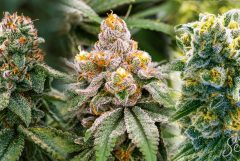

Hi, a bit out of date now (2018) ?